HKIA features Cheongsams in its third temp exhibition
Hong Kong airport never ceases to surprise me – in both good and bad ways. (On my last visit I was intrigued to find that the McDonalds located at the airside entrance, which has a ‘24 Hours’ sign hung above the serving area, is in fact closed through the night. When I asked what the ‘24 Hours’ referred to, a sleepy “worker” said that they are on duty all night, but that they don’t serve customers until 6am!)
I have already blogged twice about the place regarding two of its temporary exhibitions (tea and food), and when I recently went through it for the third time in as many months I discovered yet another exhibition – this one about the history of the Qipao, or Cheongsam, in Hong Kong. This one can be found near Gate 22.
The exhibition focuses on how the tradition of the cheongsam developed in Hong Kong and gradually became a source of inspiration for the creation of new fashions.
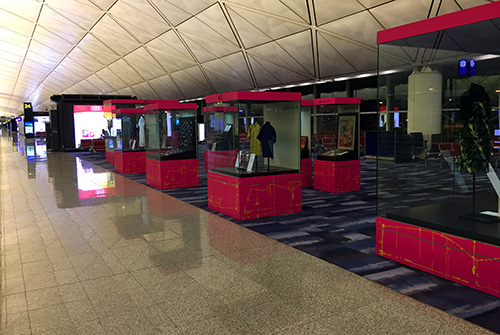
Qipao literally means a Manchu robe but is generally referred to as a Cheongsam in Hong Kong (which translates as a long dress). This one piece dress was highly fashionable between the 1930s and 1970s, although the Hong Kong cheongsam for women can be traced back to the loose cut and wide sleeved dress which emerged in the late Qing dynasty.
The stylish and often tight-fitting cheongsam that is best known today was created in the 1920s in Shanghai and made fashionable by socialites and upper class women.
As a matter of interest, the word cheongsam comes from the Cantonese pronunciation of the Shanghainese term zǎnze, by which the original tight-fitting form was first known. The Shanghainese name was in contrast with usage in other parts of China where ‘chángshān’ in Mandarin refers to an exclusively male dress, while the female version is known as a qípáo.
In the late Qing period, the silhouette of the Manchu robe grew slimmer and revealing more of the body outline. Educated women in the early Republican period could be identified by these new outfits which featured a blouse with an asymmetrical opening and a curved hemline on top of a plain black skirt. But during the May 4 Movement in 1919, a trend emerged for female students to wear men’s robes in order to express their desire for sexual equality. Initially these robes were made of plain, relatively course, fabric which was easier to handle.
In the 1930s and 40s the cheongsams were tubular in form with a slimmed down waste, side slits, and a sweep about the same width as the hip. This rather drab looking cheongsam has been made in the style of the late 1930s…
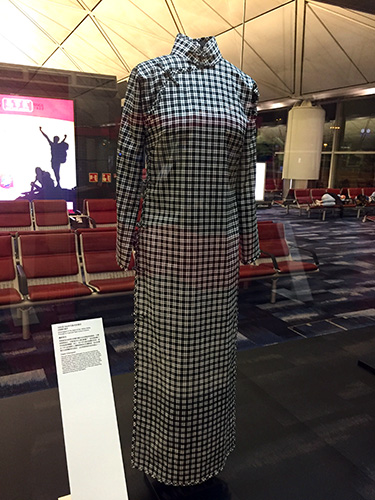
A large number of Shanghai taylors migrated to Hong Kong and Taiwan from mainland China in the late 1940s as the Communist Revolution curtailed the popularity of the cheongsam and other fashions in Shanghai. There it remained popular over the next two decades.
In the 1950s, women in the workforce in Hong Kong started to wear more functional cheongsams made of wool, twill, and other materials. Most were tailor fitted and often came with a matching jacket. The dresses were a fusion of Chinese tradition with modern styles.
Over in the mainland, from the 1950s to the 1970s, but especially during the Cultural Revolution (1966-1976), the cheongsam was seen as a feudal dress from ancient times. It was abandoned as daily clothing, and people who wore cheongsams were judged as being bourgeois, which was very un-PC at the time. (In 1963, when President Liu Shaoqi visited countries in South Asia, first lady Wang Guangmei wore a cheongsam. She was later declared guilty in the Cultural Revolution for wearing it!
Recently there has been a revival of the Shanghainese cheongsam in Shanghai and elsewhere in Mainland China, where it is mostly worn as a stylish party dress.
This HK cheongsam was made in the 1950s by Mee Wah Qipao.
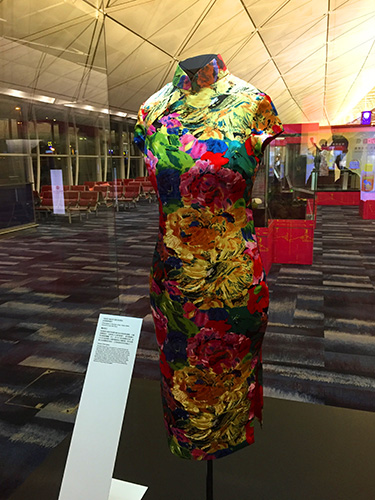
To my untutored eye it doesn’t look a whole lot different from this modern design by Renee K.
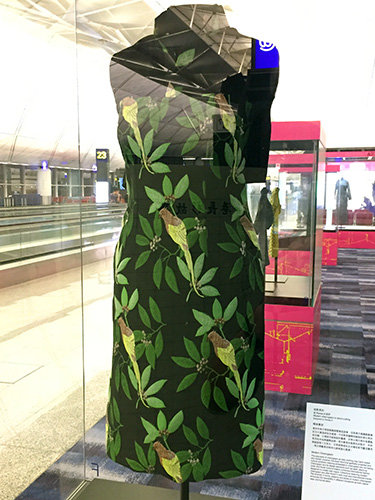
or this one by Vivienne Tam.
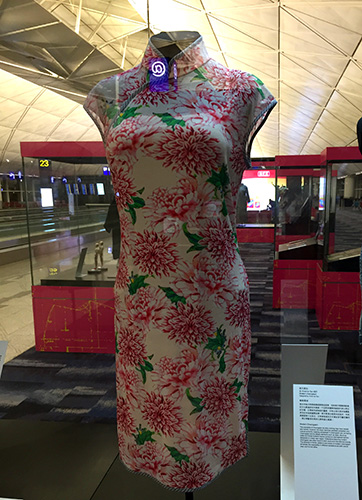
But this modern cheongsam, made out of denim fabric, and designed by Classics Anew, takes the prize as far as I am concerned for ugliness and bad taste. Yuk. How could they!
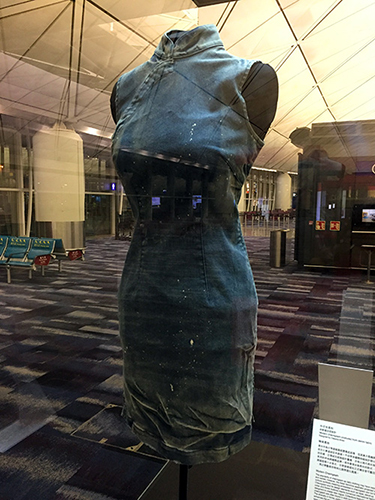
The Cheongsam has long been used for school uniforms in Hong Kong, especially in church-run schools. These cheongsams are usually straight, with no waist shaping, and the cheongsam hem must reach mid-thigh.
The cheongsams fit closely to the neck, and the stiff collar is hooked closed, despite the tropical humid and hot weather. Although the skirts have short slits, they are too narrow to allow students to walk in long strides.
Hong Kong Poo To Middle School, for instance, adopted this school uniform in the 1940s. In summer white is worn, switching over to a dark blue colour in winter.
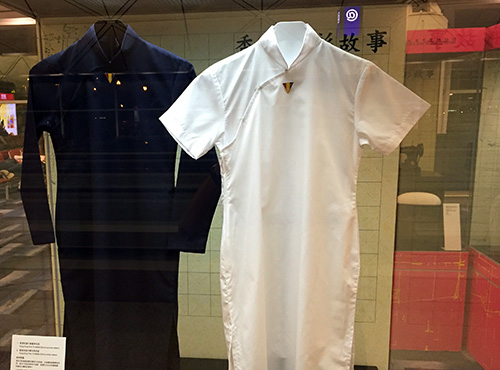
And in case you have difficulty in picturing what that might look like, there are two dolls – with characteristically Chinese blonde hair (!) – showing off the school fashion.
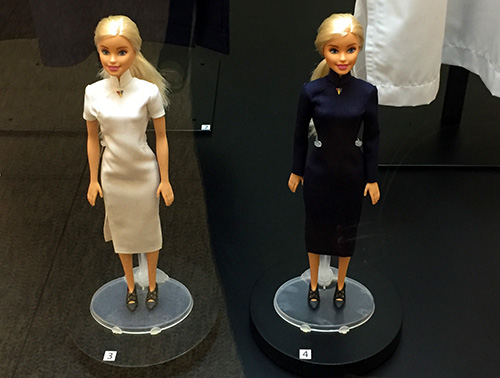
Flower buttons made by Madam Po Ming-wah are also on show, demonstrating the traditional skills passed down by Shanghai craftsmen. They are regarded as more exquisite than their Guangdong counterparts which are perhaps more solidly functional.
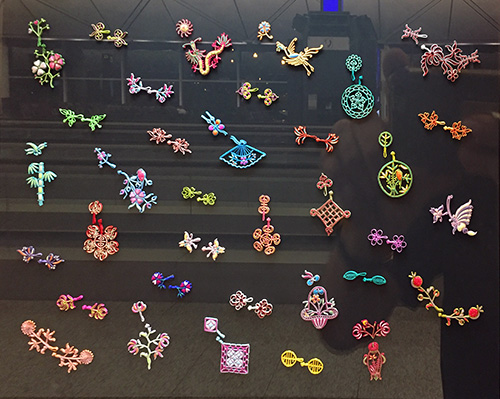
On display, too, are measurement sheets and invoices together with fabric samples…
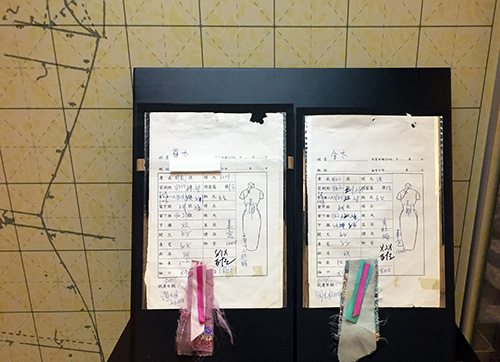
… as well as some of the tools used in their manufacture, such as threads, sewing kits, chalk pouches and triangular tailors’ chalk.
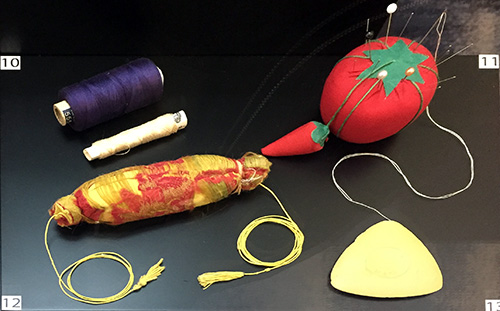
Scissors, scraper, pincers and forceps are also on display…
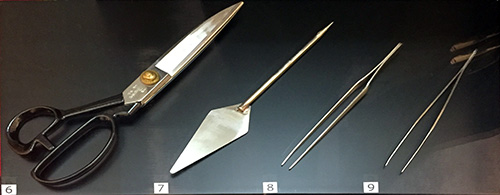
To give an example of how ubiquitous this fashion item was, you can see an album cover dating back to 1960 of The Lemon Sisters; the cover of a 1970s album by Paula Tsui; the cover from a comic book in 2012; a concert poster from 2005; and a comic book cover produced in the 1970s.
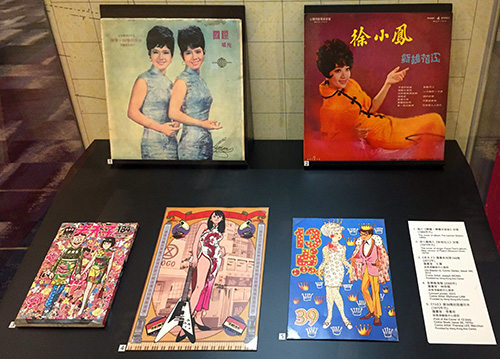
Cheongsams were also used extensively in advertising material – picking up on a trend from the Shanghai region in particular. Here’s a replica of a calendar poster of the Hing Kee Bookstore from the 1920s...
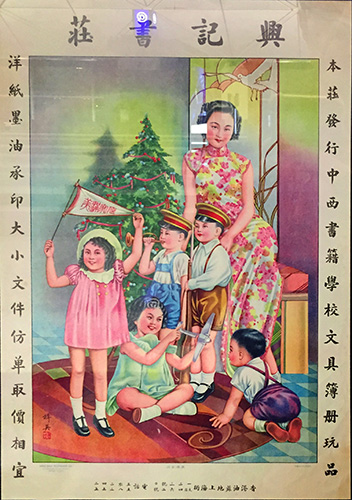
… while there are also replicas of 1960s adverts for the Tak Wan restaurant and Ovaltine beverages.
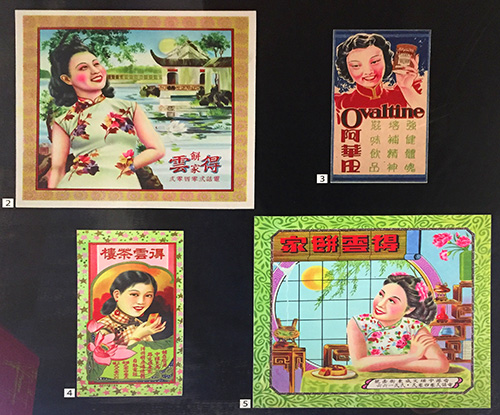
All in all, this is a charming little exhibition and well worth spending a good ten minutes taking it all in.
